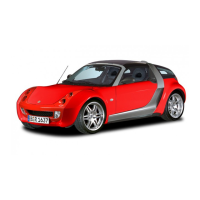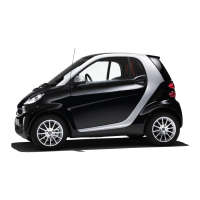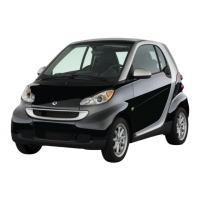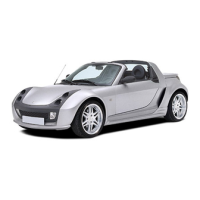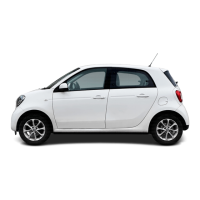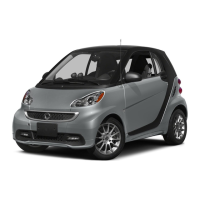Evasive Maneuver Assist (EMA) (if
equipped)
WARNING Possible risks caused by
use of Evasive Maneuver Assist
► Evasive Maneuver Assist only pro-
vides assistance, and it may not op-
erate normally under some driving
conditions, weather conditions, traf-
fic conditions or road conditions.
► You are always responsible for driv-
ing your vehicle safely and abiding
all all relevant traffic laws and
regulations.
The system can help you mitigate the risk
of collision when your vehicle is rapidly ap-
proaching another one which is stationary
or moving in the same direction.
The system is activated only when:
● The system detects that the subject ve-
hicle is about to collide with the forward
vehicle.
● You turn the steering wheel to steer
around the target vehicle.
When the Evasive Maneuver Assist detects
that the vehicle is about to collide and the
driver turns the steering wheel to avoid
collision, the Evasive Maneuver Assist will
increase the steering force of the vehicle
and assist the driver in collision avoidance;
when the Evasive Maneuver Assist is acti-
vated, the driver information display will
remind the driver that the Evasive Maneu-
ver Assist is active.
NOTE Notes on Evasive Maneuver
Assist
► The system does not automatically
bypass the target vehicle. It will not
activate if you do not turn the steer-
ing wheel.
► It will not activate if you are too
close to the vehicle ahead and the
collision cannot be avoided.
► The Evasive Maneuver Assist is an
emergency safety function, and it
cannot avoid collision in all scenes.
► Do not test the Evasive Maneuver
Assist on actual roads under guid-
ance of non-professionals.
Limitations of Evasive Maneuver Assist
The functions of Evasive Maneuver Assist
may be affected particularly in the follow-
ing situations:
● When you are reversing, the system
does not work.
● When the vehicle speed is below 50 km/
h or above 100 km/h.
● When the vehicle is connected with a
trailer.
● When collision risk is detected in neigh-
boring lanes.
● When there is a risk of vehicles crossing
the kerb.
● When Electronic Stability Control fails,
shuts down or interferes with the
vehicle.
● The driver steps on the accelerator
pedal deeply.
● The driver does not turn the steering
wheel or turns the steering wheel too
late.
● The Electronic Stability Control is turned
off or subject to intervention.
Traffic Sign Recognition (TSR)
Traffic Sign Recognition includes Speed
Limit Information Function (SLIF), which ac-
quires speed limit sign, prohibition sign
and other road traffic sign information
through cameras and map, and reminds
Driving and parking 133

